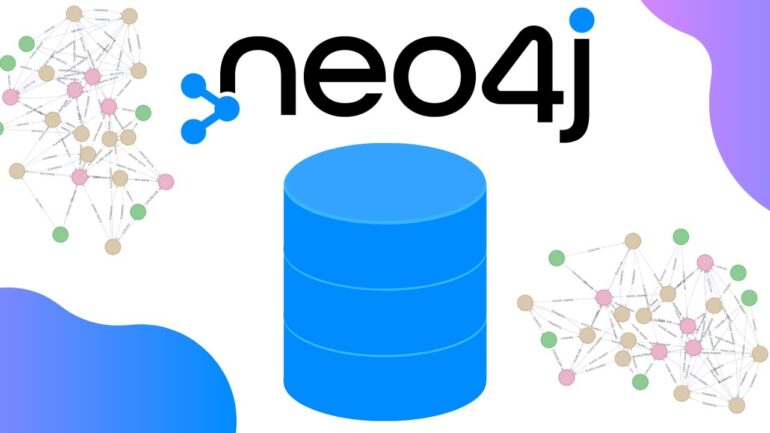TL;DR:
- Neo4j, the leading graph database and analytics company, announces integration with Google Cloud’s Vertex AI.
- The collaboration empowers enterprise customers to leverage Neo4j’s knowledge graphs and Google’s generative AI capabilities.
- Key benefits include natural language interaction with knowledge graphs, transforming unstructured data into knowledge graphs, real-time GenAI enrichment, support for vector embeddings, and grounding with knowledge graphs.
- The partnership, initiated in 2019, has seen success in various AI use cases for large enterprises and SMBs.
- The integration signifies a powerful union of graph technology and cloud computing, providing businesses with valuable insights and impactful data-driven transformations.
Main AI News:
In a groundbreaking move, Neo4j, the renowned graph database and analytics company, has announced an exciting product integration with Google Cloud’s cutting-edge generative AI features in Vertex AI. This collaboration brings forth a remarkable synergy between Neo4j’s graph technology and Google’s industry-leading large language model (LLM) platform, empowering enterprise customers with enhanced knowledge graphs and unprecedented generative AI capabilities.
Neo4j’s graph database and analytics prowess enable the creation of knowledge graphs, which capture intricate relationships between entities. These knowledge graphs serve as a foundation for AI systems, enabling them to reason, infer, and retrieve relevant information with exceptional precision and efficiency. By integrating with Google’s generative AI capabilities in Vertex AI, Neo4j ensures that large language models (LLMs) and other generative AI systems yield outcomes that are not only more accurate but also transparent and explainable.
The strategic integration between Neo4j and Google Cloud Vertex AI offers enterprise customers a range of powerful capabilities, including:
- Natural Language Interaction with Knowledge Graphs: With Vertex AI’s generative AI capabilities, users can effortlessly interact with knowledge graphs using natural language queries. By converting user input into Cypher query language statements, this feature grants non-technical users seamless access to knowledge graphs. Neo4j plans to extend this functionality to existing dashboarding and user tools, ensuring a user-friendly experience for their vast customer base.
- Unstructured Data Transformation into Knowledge Graphs: Leveraging the generative AI capabilities of Vertex AI, developers can now process unstructured data, structure it, and load it into knowledge graphs. Once integrated, users can extract valuable insights by utilizing Neo4j’s data visualization tools and query utilities like Bloom for business intelligence (BI) and Neo4j Graph Data Science.
- Real-time GenAI Enrichment: Neo4j databases now possess the remarkable capability to invoke Vertex AI services in real-time, enriching knowledge graphs on-the-fly. Generative models can be augmented with structured data from knowledge graphs, providing vital contextual information for model processing. The response generated by the model can then be post-processed for result verification, guard-railing, and enriched with accurately generated semantic entities.
- Support for Vector Embeddings: Neo4j’s support for vector embeddings enables long-term memory for large language models. With more than 60 algorithms, including efficient (approximate) nearest neighbor graphs and cosine similarity on embedding vectors, Neo4j’s Graph Data Science facilitates similarity searches. Paired with Vertex AI’s embedding APIs, this amalgamation proves to be a formidable resource for enterprises, reducing costs and facilitating the development of intelligent applications.
- Grounding with Knowledge Graphs: Grounding plays a pivotal role in validating responses from large language models against enterprise knowledge graphs. By employing LangChain in conjunction with Neo4j-based knowledge graphs, developers can ensure that the results received are grounded in reliable data. This approach mitigates the risk of hallucinations and instills confidence in the accuracy and integrity of the outputs.
This Neo4j-Google Cloud partnership dates back to 2019 when they embarked on a strategic collaboration. Since then, numerous large enterprises and SMBs have harnessed the power of Neo4j on Google Cloud for a diverse range of AI use cases. From combatting money laundering to personalized recommendations, supply chain management, natural language generation, molecular design, and digital twinning, these organizations have witnessed the transformative impact of Neo4j’s capabilities.
Nenshad Bardoliwalla, the Director of Product Management for Vertex AI at Google Cloud, acknowledged the profound impact of this integration, stating, “Businesses are undergoing data- and AI-driven transformations at an unprecedented rate. These new integrations between Neo4j and Vertex AI will help businesses create more value and impact with their data and LLMs through capabilities like real-time enrichments and grounding, pattern identification in large datasets, and new abilities to explore their data with natural language.”
Emil Eifrem, the Co-Founder and CEO of Neo4j, expressed his enthusiasm for the partnership, highlighting the amalgamation of graph technology and cloud computing excellence in the AI era. Eifrem remarked, “Together, we empower enterprises seeking to leverage generative AI to better innovate, provide the best outcome for their customers, and unlock the true power of their connected data at unprecedented speed.”
Conclusion:
The integration between Neo4j and Google Cloud Vertex AI marks a significant milestone in the market. By combining the strengths of graph technology and generative AI, businesses can now unlock the true potential of their connected data. The ability to interact with knowledge graphs using natural language, transform unstructured data into valuable insights, and enrich knowledge graphs in real-time opens up new avenues for innovation and enhanced decision-making.
Additionally, support for vector embeddings and grounding with knowledge graphs ensures the accuracy and reliability of outputs. This integration signifies a shift towards more transparent, explainable, and impactful AI-driven transformations, enabling businesses to create value, provide superior customer experiences, and gain a competitive edge in today’s data-driven landscape.

